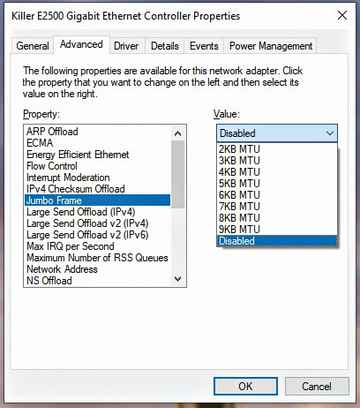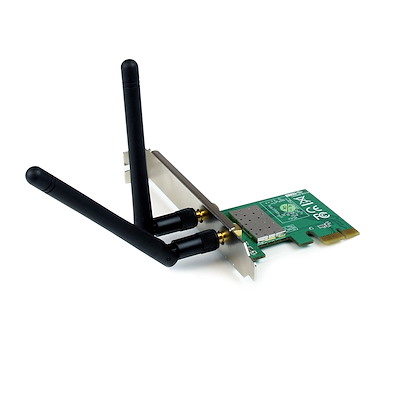In-Building Fibre Infrastructure
- Efficient Networks Network & Wireless Cards Driver Download 64-bit
- Efficient Networks Network & Wireless Cards Driver Download Windows 10
- Efficient Networks Network & Wireless Cards Driver Downloads
- Efficient Networks Network & Wireless Cards Driver Download
In this paper, we propose a novel two-stage deep learning (TSDL) model based on a stacked auto-encoder with a soft-max classifier for efficient network intrusion detection. The model comprises two. Network segmentation through bridging and switching helps break down a large, congested network into an aggregation of smaller, more efficient networks. Routers edit A typical home or small office router showing the ADSL telephone line and Ethernet network cable connections. Oct 06, 2020 GENet: A GPU-Efficient Network. A new deep neural network structure specially optimized for high inference speed on modern GPU. It uses full convolutions in low-level stage and depth-wises convolutions in high-level stages. More details could be found in our arXiv preprint: Ming Lin, Hesen Chen, Xiuyu Sun, Qi Qian, Hao Li, Rong Jin. Aug 20, 2019 Abstract: The success of deep neural networks (DNNs) is attributable to three factors: increased compute capacity, more complex models, and more data. These factors, however, are not always present, especially for edge applications such as autonomous driving, augmented reality, and internet-of-things. Training DNNs requires a large amount of data, which is difficult to obtain.
Efficient Networks provides the installation of infrastructure that will provide open access to ultra-high speed fibre broadband to the tenants in a building. Three methods commonly used in Singapore is via wiring through the existing or new cable tray, direct method and/or break-point method.
The Air Blown Fibre (ABF) is a process of installing optical fibre by blowing fibre cables using compressed air through a fibre blowing machine. One of the system deployed is through the ABF going mainly from the MDF room and into the riser following into the respective units.
Broadband Wireless

Efficient can deploy network independent tools and software with the ability to see the “whole picture” as well as pinpointing channel interference for ISPs and Hotspots. Wimax and 802.11 a/b/g measurements can be mapped to GPS data so that every time/date/location stamped for real-time or post processing analysis.
WI-FI Site Survey
The Yellowjacket® system uses a custom receiver, interfaces true RF spectrum protocol analysis and direction finding tool accurate to within 1 dB. Berkeley’s calibrated receiver sweeps and measures all RF energy in the 2.4 GHz range as well as on each of the 14 OFDM/DSSS channels for detailed network inspection of any nearby 802.11b/g APs or STAs. More Information Yellowjacket® is a calibrated wireless receiver module that interfaces with HP’s iPAQ® PocketPC® in sweeping, analyzing and optimizing 2.4 GHz Wi-Fi Networks. The receiver measures all 14 OFDM/DSSS network channels which operate on the IEEE 802.11b/g standard allowing the user to determine the AP’s MAC, SSID and RSSI signal levels for all access points on or off any 802.11b/g WISP or Hotspots.
Cellular Mobile Wireless
The aim of propagation model calibration is to enable RF prediction models to make reliable simulations. The CW measurement process provides a real-world sampling through RF measurements campaigns of actual coverage of the frequencies understudy transmitted by a CW transmitter and measured within the transmission range for the data logging and collection of actual Received Signal Levels within the coverage areas. The results are used to calibrate empirical models within the Radio Network planning software to gain better accuracies on RMS and confidence levels.
CW Measurement Solution for Propagation Model Tuning
The Coyote™ is is a high performance, modular receiver system providing precision, dual-band signal strength measurements using two independent receivers. It is internally powered (or may be externally) and logs measurements and displays graphically, a wide array of built-in real-time macro measurements. These include RSSI, adjacent channel, 'best server', peak hold and A-band or B-band scan analysis for RF Propagations Model Tuning and Calibrations.
We carry a wide assortment of RF measurement and analysis tools such as Power meters, Spectrum analyzers and GSM/CDMA modulated transmitters to cater to your RF engineering needs.
2G/3G In-line RF Power Meter
The YellowFrog® handheld power meter with frequencies range from 800 MHz to 2.2 GHz with an accuracy of + 0.5 dB with an in-line type 'N' connector for instant verification of wired power levels in dBm or Watts. Yellow Frog™ only requires 2 AA Ni-MH batteries (2 sets and charger included) to operate continuously for over 8 hours. The portable instrument weighs less than 2 pounds and features a large LCD display and USB port which also YellowFrog Power Meterprovides power when connected to any WindowsXP PC.
Wireless Solutions Hands-on
Network Performance and Calibration Tools
Phyton usb devices driver download. For most Unix systems, you must download and compile the source code. The same source code archive can also be used to build the Windows and Mac versions, and is the starting point for ports to all other platforms. Download the latest Python 3 and Python 2 source. Python wrapper for the candle (gsusb) windows driver which is published here. Used to communicate with candleLight, CANable (with candleLight firmware ) CAN-USB adapters. What is USBTMC and where can I download drivers for it? Q: What is USBTMC and where can I download drivers for it? A: B&K Precision Corporation USBTMC (USB Test & Measurement Class) is one type of USB protocol that is commonly used for remote communication with test and measurement instrumentations. Assuming your using Linux and libusb-1.0 as a PyUSB's backend library. According to the libusb documentation: // Detach a kernel driver from an interface. // If successful, you will then be able to claim the interface and perform I/O. Int libusbdetachkerneldriver (libusbdevicehandle.dev, int interfacenumber) // Re-attach an interface's kernel driver, which was previously // detached. USB drivers for Phyton emulators and programmers All the software distributives that control our device programmers and hardware development tools include all necessary USB drivers. It is not necessary to download them from the FTDI website.


Efficient Networks services and product offers are designed to assist engineers, senior management, and project management in service providers, regulators and industry watchers in keeping abreast of best engineering practices, technology developments and other factors affecting their business.
In network science, the efficiency of a network is a measure of how efficiently it exchanges information.[1] The concept of efficiency can be applied to both local and global scales in a network. On a global scale, efficiency quantifies the exchange of information across the whole network where information is concurrently exchanged. The local efficiency quantifies a network's resistance to failure on a small scale. That is the local efficiency of a node characterizes how well information is exchanged by its neighbors when it is removed.
Definition[edit]
The average efficiency of a network is defined as:[1]
Efficient Networks Network & Wireless Cards Driver Download 64-bit
3.0_02_normal_1528979698684s.jpg)
Efficient Networks Network & Wireless Cards Driver Download Windows 10
where denotes the total nodes in a network and denotes the length of the shortest path between a node and another node .
As an alternative to the average path length of a network, the global efficiency of a network is defined as:
where is the 'ideal' graph on nodes wherein all possible edges are present. The global efficiency of network is a measure comparable to , rather than just the average path length itself. The key distinction is that measures efficiency in a system where only one packet of information is being moved through the network and measures the efficiency where all the nodes are exchanging packets of information with each other.
As an alternative to the clustering coefficient of a network, the local efficiency of a network is defined as:
where is the local subgraph consisting only of a node 's immediate neighbors, but not the node itself.
Efficient Networks Network & Wireless Cards Driver Downloads
Applications[edit]
Broadly speaking, the efficiency of a network can be used to quantify small world behavior in networks. Efficiency can also be used to determine cost-effective structures in weighted and unweighted networks. [2] Comparing the two measures of efficiency in a network to a random network of the same size to see how economically a network is constructed. Furthermore, global efficiency is easier to use numerically than its counterpart, path length.[3]
Efficient Networks Network & Wireless Cards Driver Download
For these reasons the concept of efficiency has been used across the many diverse applications of network science.[2][4] Efficiency is useful in analysis of man-made networks such as transportation networks and communications networks. It is used to help determine how cost-efficient a particular network construction is, as well as how fault tolerant it is. Studies of such networks reveal that they tend to have high global efficiency, implying good use of resources, but low local efficiency. Roccat driver download. This is because, for example, a subway network is not closed, and passengers can be re-routed, by buses for example, even if a particular line in the network is down.[1]
Beyond human constructed networks, efficiency is a useful metric when talking about physical biological networks. In any facet of biology, the scarcity of resource plays a key role, and biological networks are no exception. Efficiency is used in neuroscience to discuss information transfer across neural networks, where the physical space and resource constraints are a major factor.[3] Efficiency has also been used in the study of ant colony tunnel systems, which are usually composed of large rooms as well as many sprawling tunnels.[5] This application to ant colonies is not too surprising because the large structure of a colony must serve as a transportation network for various resources, most namely food.[4]
References[edit]
- ^ abcLatora, Vito; Marchiori, Massimo (17 October 2001). 'Efficient Behavior of Small-World Networks'. Phys. Rev. Lett. 87 (19): 198701. arXiv:cond-mat/0101396. Bibcode:2001PhRvL.87s8701L. doi:10.1103/PhysRevLett.87.198701. PMID11690461.CS1 maint: uses authors parameter (link)
- ^ abLatora, Vito; Marchiori, Massimo (March 2003). 'Economic small-world behavior in weighted networks'. The European Physical Journal B. 32 (2): 249–263. arXiv:cond-mat/0204089. Bibcode:2003EPJB..32.249L. doi:10.1140/epjb/e2003-00095-5.CS1 maint: uses authors parameter (link)
- ^ abBullmore, Ed; Sporns, Olaf (March 2009). 'Complex brain networks graph theoretical analysis of structural and functional systems'. Nature Reviews Neuroscience. 10 (3): 186–198. doi:10.1038/nrn2575. PMID19190637.CS1 maint: uses authors parameter (link)
- ^ abBocaletti, S.; Latora, V.; Moreno, Y.; Chavez, M.; Hwang, D.-U. (February 2006). 'Complex networks: Structure and dynamics'. Physics Reports. 424 (4–5): 175–308. Bibcode:2006PhR..424.175B. CiteSeerX10.1.1.408.2061. doi:10.1016/j.physrep.2005.10.009.CS1 maint: uses authors parameter (link)
- ^Buhl, J.; Gautrais, J.; Solé, R.V.; Kuntz, P.; Valverde, S.; Deneubourg, J.L.; Theraulaz, G. (November 2002). 'Efficiency and robustness in ant networks of galleries'. The European Physical Journal B. 42 (1): 123–129. Bibcode:2004EPJB..42.123B. doi:10.1140/epjb/e2004-00364-9.CS1 maint: uses authors parameter (link)
